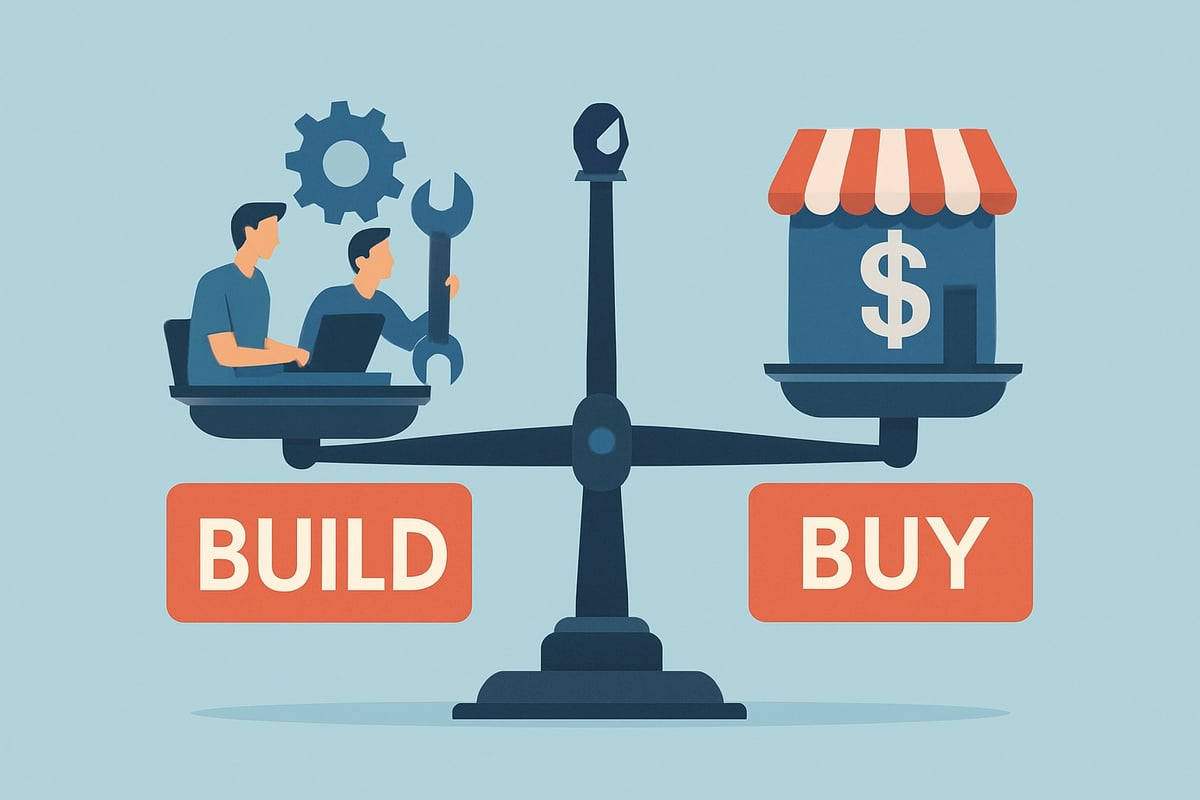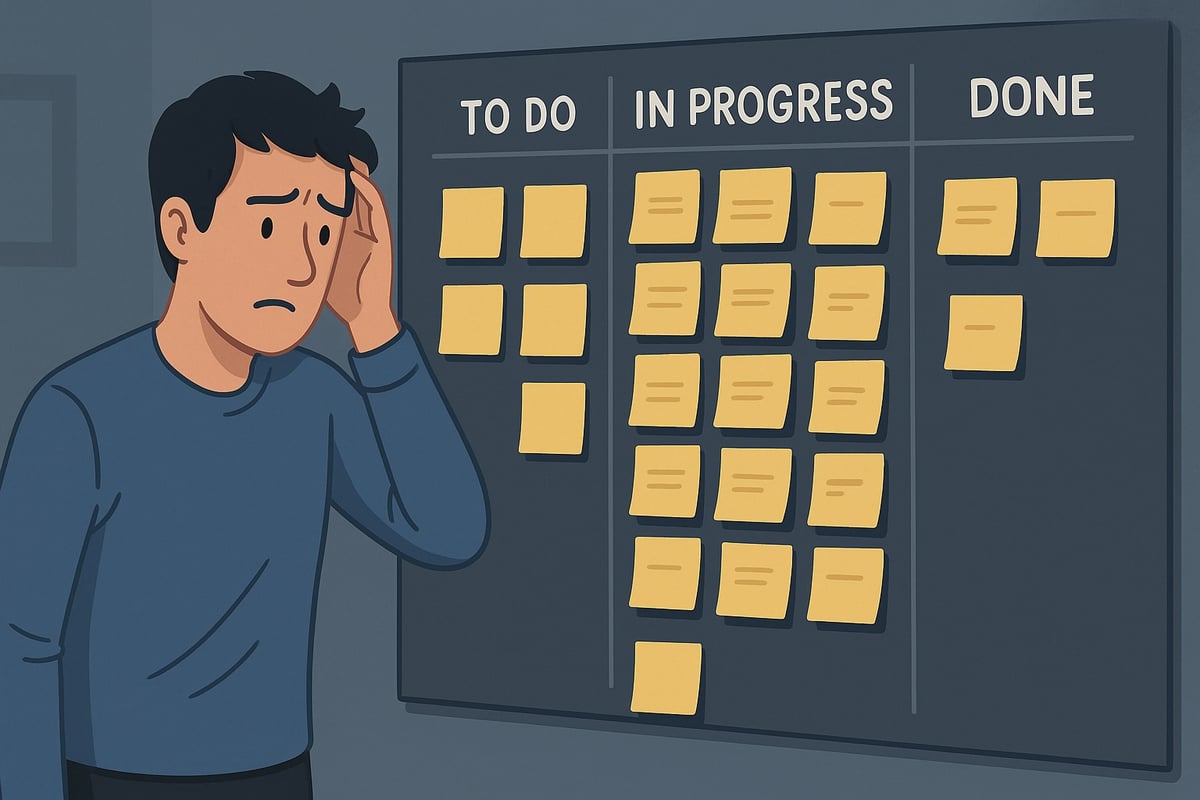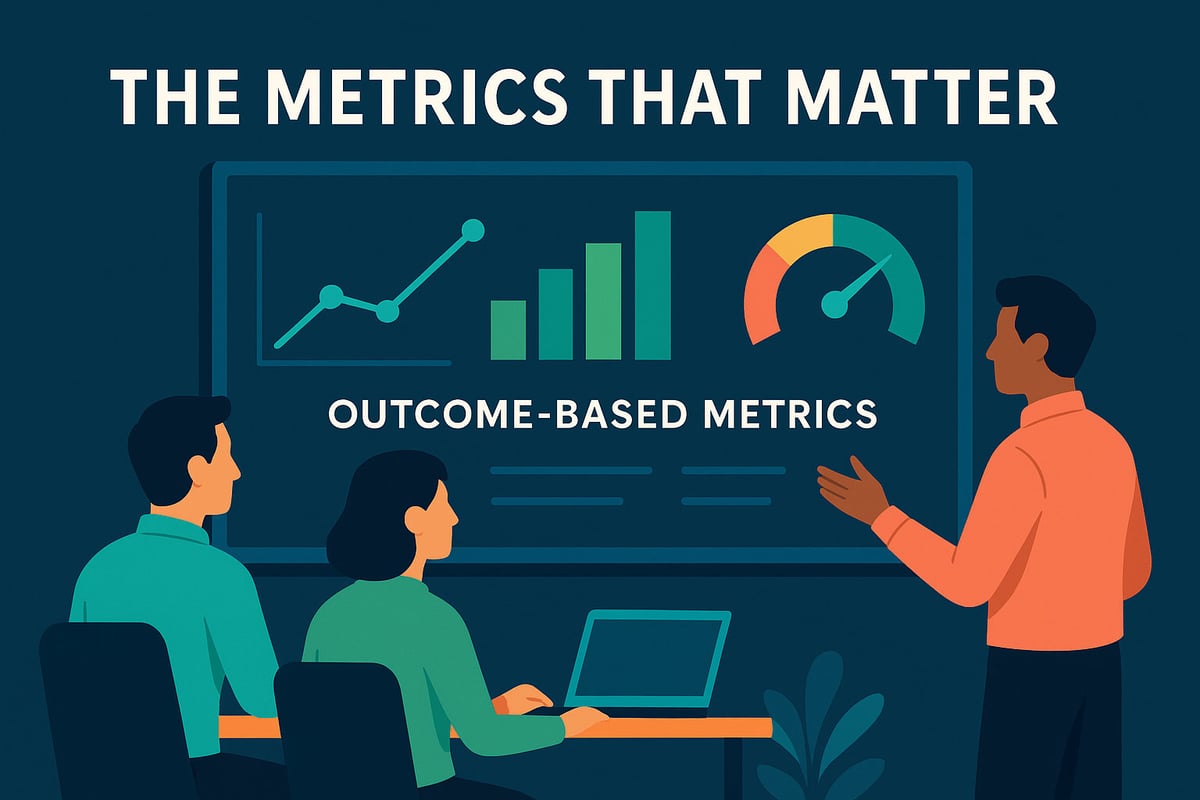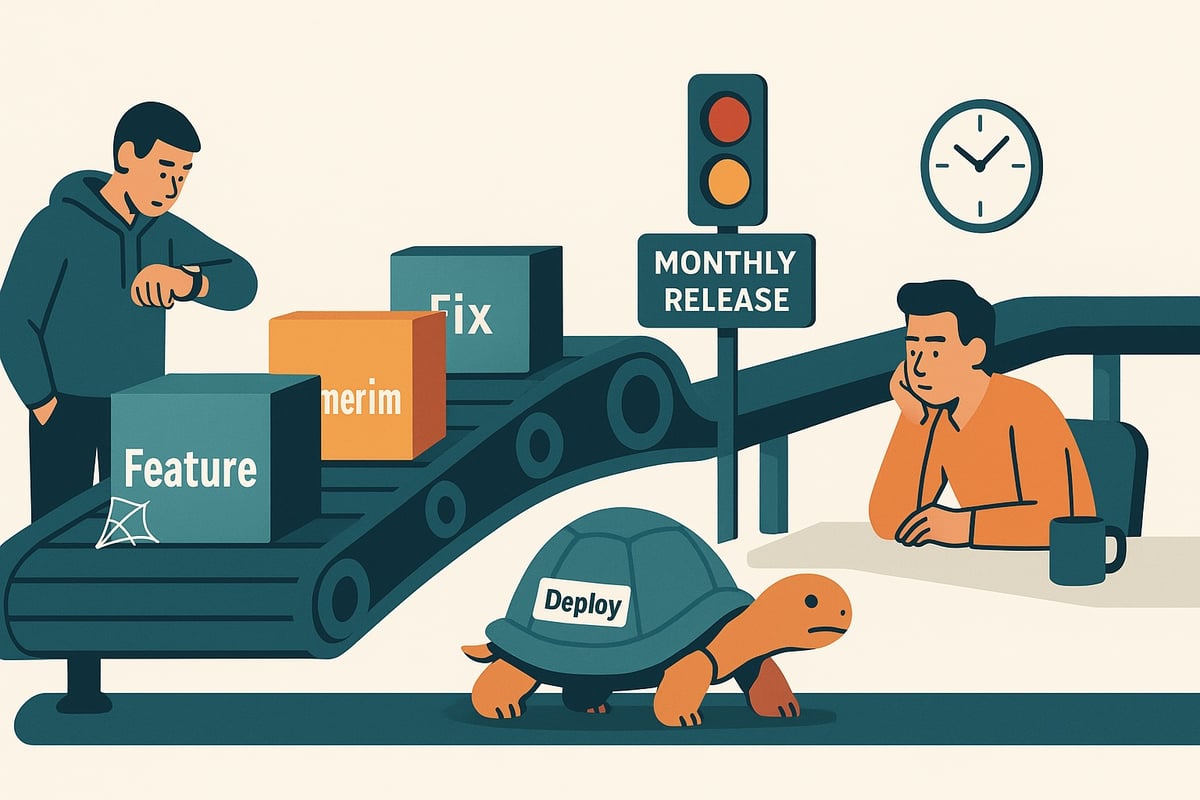Every engineering leader will face this important question multiple times throughout their career: Should we build this developer tool ourselves or buy an existing solution? While seemingly straightforward, this decision can have million-dollar implications for your organization’s engineering velocity, resource allocation, and competitive positioning.
The Strategic Framework: Commodities vs. Differentiators
The most foundational principle for approaching this decision comes from understanding what type of capability you’re evaluating:
“Commodity capabilities are required by your company but aren’t unique to you. These capabilities offer little to no competitive advantage, so it makes sense to follow established best practice and adopt the industry standard.”
— Thoughtworks
Thoughtworks contrasts this with differentiator capabilities, which are “how your company differentiates itself in the market.” For these capabilities, higher investments are justified because they directly help your company stand out.
The mistake many organizations make is analyzing at too broad a level. Break down developer tools into their component capabilities rather than evaluating entire suites as single entities. When you analyze at this more granular level, you’ll often discover that what appeared to be one monolithic decision actually contains both commodity and differentiator components.
Four Critical Factors in Your Decision
1. Time to Market
Speed to implementation is consistently identified as one of the most significant advantages of buying rather than building. According to HatchWorks, “bought software can be implemented in weeks to months. Of course, it still takes time to find the right vendor, integrate the solution into your systems, and train people to use it but the timeline will be much shorter.”
For organizations in competitive or fast-moving markets, this time difference can be critical. If your engineering team needs to quickly implement a solution to remain competitive, buying often provides the necessary acceleration.
2. Hidden Costs vs. Visible Expenses
The build vs. buy decision fundamentally involves balancing different cost structures. Building typically involves higher upfront development costs but potentially lower long-term licensing expenses, while buying often means lower initial investment but ongoing subscription fees.
However, the true costs extend far beyond the obvious:
- Building costs: Development resources, quality control, infrastructure, training, ongoing maintenance, and the opportunity cost of engineers working on tools rather than core products
- Buying costs: Software licensing, implementation and integration, customization, training, support fees, and potential vendor lock-in
A comprehensive ROI analysis is essential but remember: “The number will only be as good as your assumptions and thoroughness.” Always factor in the hidden costs that might not appear in your initial calculations.
3. Strategic Control vs. Proven Expertise
Control over features, functionality, and roadmap represents the primary advantage of building rather than buying developer tools.
“Building new software grants you greater control throughout the development process, from design to deployment. This level of control provides better flexibility for scaling and evolving the system, which is particularly beneficial for businesses expecting substantial growth.”
— Pluralsight
However, buying provides access to the expertise of established software vendors who specialize in creating and maintaining these solutions—expertise that may not be available in-house. This tradeoff between control and expertise should be carefully weighed based on your organization’s specific context.
4. Maintenance Burden and Resource Allocation
The ongoing maintenance burden represents a significant portion of the total cost of ownership for either approach. When you buy off-the-shelf products, you’re also purchasing external, expert support. When you build, your team becomes that support function.
This has significant implications for resource allocation. Building tools internally creates opportunity costs as engineers focus on maintaining tools rather than developing core products. Internal builds require ongoing support, bug fixes, and adaptation to new requirements. This maintenance burden can distract engineering teams from core products and ultimately slow down innovation across the organization.
The Rise of Hybrid Approaches
Many organizations are finding that the build vs. buy decision isn’t binary but exists on a spectrum with various hybrid approaches. Industry experts increasingly recommend models that leverage the strengths of both approaches.
One specific strategy is the “Bounded Buy” approach mentioned by Thoughtworks, which prevents the “Vendor King anti-pattern” by clearly delineating which capabilities should be provided by vendors versus built in-house.
Additionally, emerging technologies are changing the calculus:
- Generative AI can assist in or even automate parts of the software development process, making the “build” path more accessible and efficient
- Low-code and no-code platforms allow faster development with minimal technical expertise, potentially making building more appealing while reducing typical disadvantages
A Decision Framework That Works
Based on industry best practices, follow these steps when evaluating whether to build or buy developer tools:
- Perform discovery interviews with stakeholders and end-users to understand needs and challenges
- Define and prioritize requirements using methodologies like MoSCoW (Must have, Should have, Could have, Won’t have)
- Evaluate capabilities against criteria including competitive differentiation, cost, complexity, time frame, and internal expertise
- Assess building options including proof of concept development
- Research buying options through vendor assessment and demos
- Make a data-driven recommendation with clear rationale
Throughout this process, involve stakeholders from across the organization including finance, product managers, end users, engineers, operations, and security. This cross-functional approach ensures that the solution you choose meets the critical needs of different stakeholder groups.
The Developer Experience Factor
For developer tools specifically, developer experience is a critical consideration. A common evaluation mistake is overlooking how important developer experience is when selecting a third-party solution. Remember that your development team will ultimately be responsible for deploying, integrating, and maintaining whatever solution you choose.
Key developer experience considerations include API capabilities, documentation quality, CLI tools, integration options, and community support. Never underestimate how significantly developer experience impacts productivity and adoption.
Make It an Ongoing Process, Not a One-Time Decision
The most successful organizations treat build vs. buy as an ongoing strategic process rather than a one-time decision. Periodically reassess as business needs evolve, technology landscapes change, and internal capabilities develop.
When executed effectively, this decision process ensures that engineering resources are allocated to areas of maximum strategic value, while commodity needs are efficiently addressed through proven solutions—ultimately driving greater innovation, faster time-to-value, and stronger competitive positioning.







